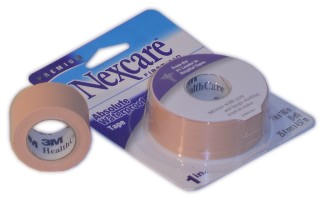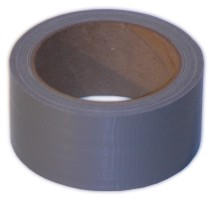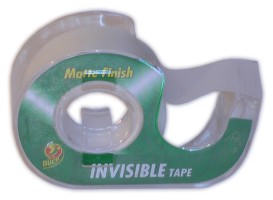|
Few supplies are needed for the MTC Method of foreskin restoration described on this website, only a few kinds of tape and a simple device that is easy to build at home. The supplies are: |
| See the video of the MTC method |
Foam tape

|
You will need a first aid tape with a foam base. The brand I specifically recommend is Nexcare Absolute Waterproof (available at most pharmacies and online at |
Duct tape

|
Ordinary duct tape, any brand will do. |
Invisible tape

|
Invisible tape goes by several names depending on the manufacturer. The Scotch brand is called "magic tape". It is a matte white tape designed for gift wrapping that turns "invisible" when rubbed. It has much better holding strength than ordinary clear tape. |
Hooked cone

|
This is the one apparatus you will have to make. It is simply a cone-shaped object with a hook on the pointed end. It does not matter how you make it or what you make it from, but the one shown is made of hardwood that has been sanded into a cone then covered with a thick coating of silicone. The silicone serves three purposes: duct tape does not stick to it, which makes removal of tape wrapped around it a simple matter of lifting it off; it provides a good deal of cushioning, especially important on the bottom, which comes in contact with the glans penis; and it makes it very easy to clean. |
Setting up the supplies for T-taping

|
For T-taping, described in-depth on the T-taping page, the foam tape will make up the actual T-tapes, the duct tape will attach the T-tapes to the cone, and the hook will allow tension to be applied. Cut out strips of foam tape approximately and inch and a half long. The exact number you will need depends on the circumference of your penis: you want enough to wrap all the way around it leaving a gap of between a quarter and a half an inch between each strip. Three or four is average. Cut out several strips of duct tape, around a quarter of an inch wide. Allow at least two for each strip of foam tape, plus two or three extra for the final wrap around. You need do nothing with the invisible tape other than keep the roll at hand. It is handy to have a convenient place to lay the tape while you are setting up, such as the acrylic board shown above. |
Setting up the supplies for cross-taping
|
For cross-taping, very little setup is necessary. Take a length of invisible tape, between an inch and a half and two inches long, and divide it lengthwise into two pieces. |
Alternatives
|
Transparent tape may be used in place of foam tape when T-taping. It does not stretch like foam tape does, so it is very important that you use as little as possible and attach it only to the very tip of the foreskin to maximize the taper. It holds well even when damp, but the skin must be absolutely dry when first adhering it. Foam tape may be used when cross-taping. In fact, its stretchability may make it an even better choice than transparent tape when you are first starting the restoration process and do not have enough foreskin to cover an erect penis. After you have regrown enough that that is no longer a problem, transparent tape is advised for no other reason than it works just as well and is much less expensive. Duct tape should never be attached directly to the foreskin. It does not hold well when cross-taping and, when T-taping, it will fail within minutes of applying tension and leave behind a sticky residue that is very difficult to remove. |
